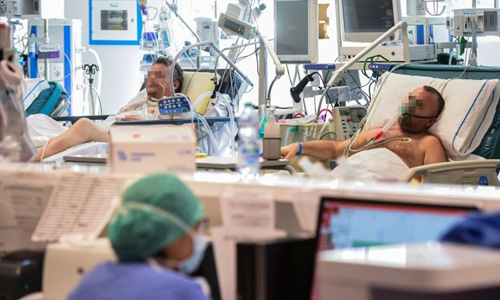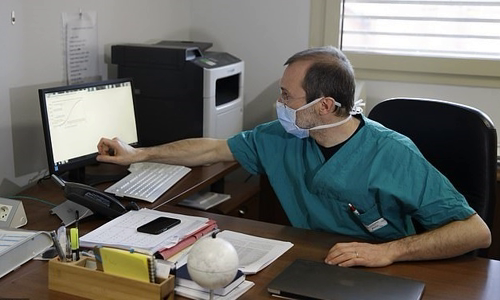Italian doctors have to choose patients for treatment, while many serious cases are crammed in the room because of a lack of equipment and medical staff.
"Three weeks ago, we did everything for every patient. But now, we have to choose which patients to take special care. This is catastrophic," says Mirco Nacoti, a physician who has resuscitated. at Papa Giovanni XXIII Hospital in the city of Bergamo, in the Lombardy region, northern Italy on March 17.

The nCoV-infected patient was treated in an intensive care unit at a Lombardy regional hospital on March 17 Photo: AFP
Italy is currently the second largest epidemic region in the world, just behind mainland China, with more than 31,000 cases, of which more than 2,500 have died. Papa Giovanni Hospital consists of 950 beds that are in crisis due to Covid-19, when more than 400 beds have been used for nCoV-infected patients and three of the hospital's four top leaders have fallen ill.
The hospital's ambulance fleet was also overloaded, and even someone with a heart attack had to wait nearly an hour for a call because the lines were busy. Dr Angelo Giupponi, who coordinates the emergency department of Papa Giovanni, said his team received 2,500 calls a day and took 1,500 to the hospital.
Giupponi says ambulance workers are not trained to cope with diseases like Covid-19 and many have contracted nCoV from their vehicles. Diego Bianco, 40, even died of Covid-19 despite no background disease.
Dr Sergio Cattaneo, head of the department of anesthesia and intensive care at a public hospital in Brescia, northern Italy, said the vacant rooms in the hospital were turned into intensive care in six days. A hospital laundry room has been converted into a waiting room filled with an ambulance stretcher, while a picnic tent has been temporarily set up outdoors to test suspected nCoV-infected patients.
"What is really shocking that we cannot predict and make us fall is the rapid spread of the disease. If the spread is not controlled, all hospitals will have to give in," Cattaneo said. good.

Dr. Sergio Cattaneo at the office of a public hospital in Brescia, northern Italy Photo: AP
The Lombardy government is pushing for plans to build a 400-bed field hospital in intensive care in an open space in Milan, although the Civil Defense Agency warns there is not enough ventilators or medical personnel for one disease. Such hospital and time is running out.
"This will be a strong message for other countries, take action early to avoid a situation like us," Cattaneo said.
Brescia, an industrial city of 200,000 people in eastern Milan, is second only to Bergamo in the number of nCoV infections in the Lombardy region. However, in the past few days, Brescia has surpassed Bergamo in the number of new cases, bringing the total number of nCoV infections to more than 3,300.
The 7 deaths in Brescia this week were elderly people in a nursing home, where eight other elderly people were also infected with nCoV. Most people infected with nCoV have only mild symptoms, but the death rate in people over 80 in Italy reaches 22%. Nearly all hospitalized patients have interstitial pneumonia.
Covid-19 had completely overwhelmed the public health system in the prosperous north of Italy, prompting regional officials to plead with retired doctors to return to work and to graduate medical students early. Italian health workers also complained of serious shortage of equipment, including masks and goggles. More than 2,300 health workers have been infected, of which 1,900 are doctors and nurses.



 SubeeKarmacharya
SubeeKarmacharya







